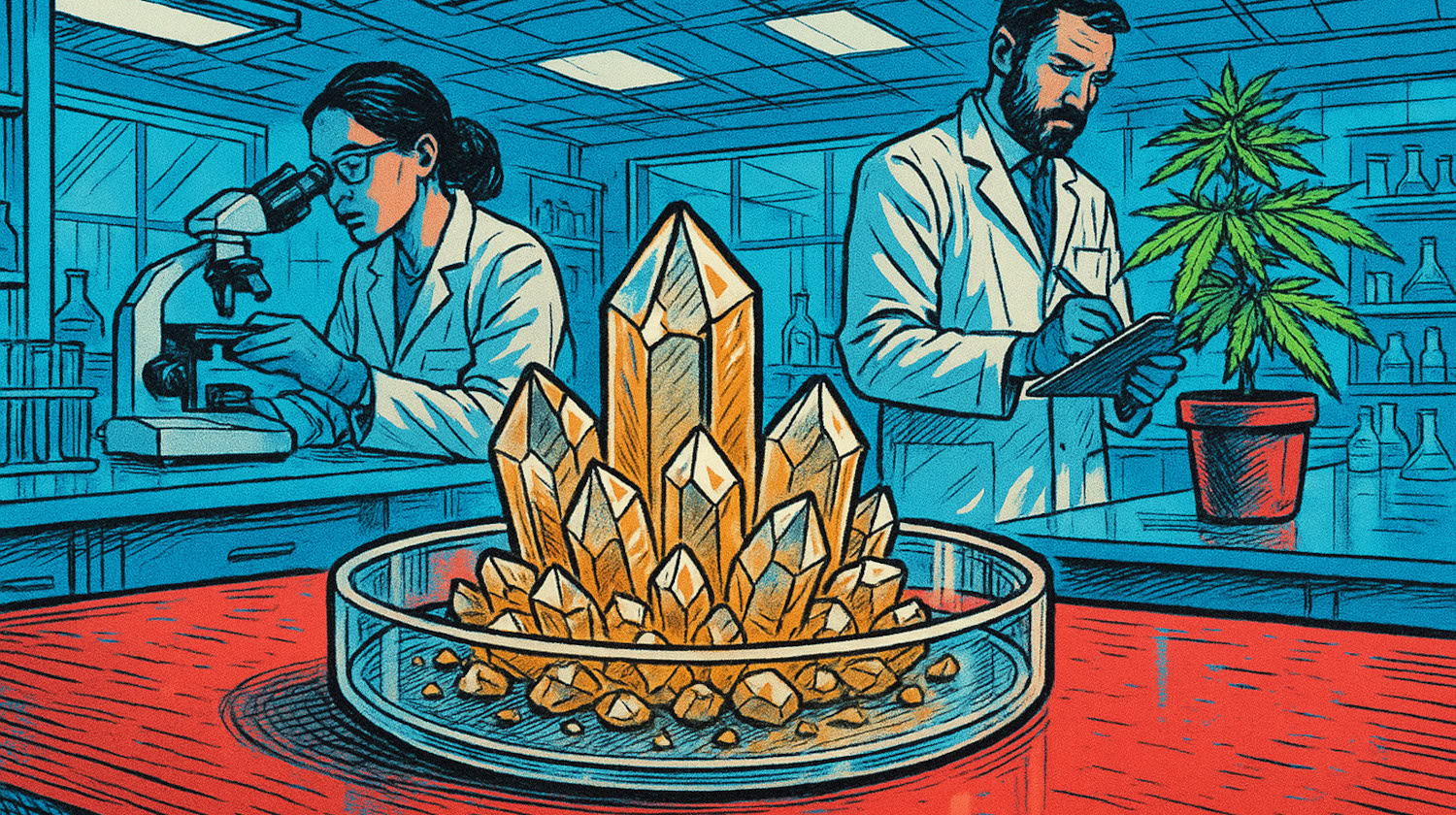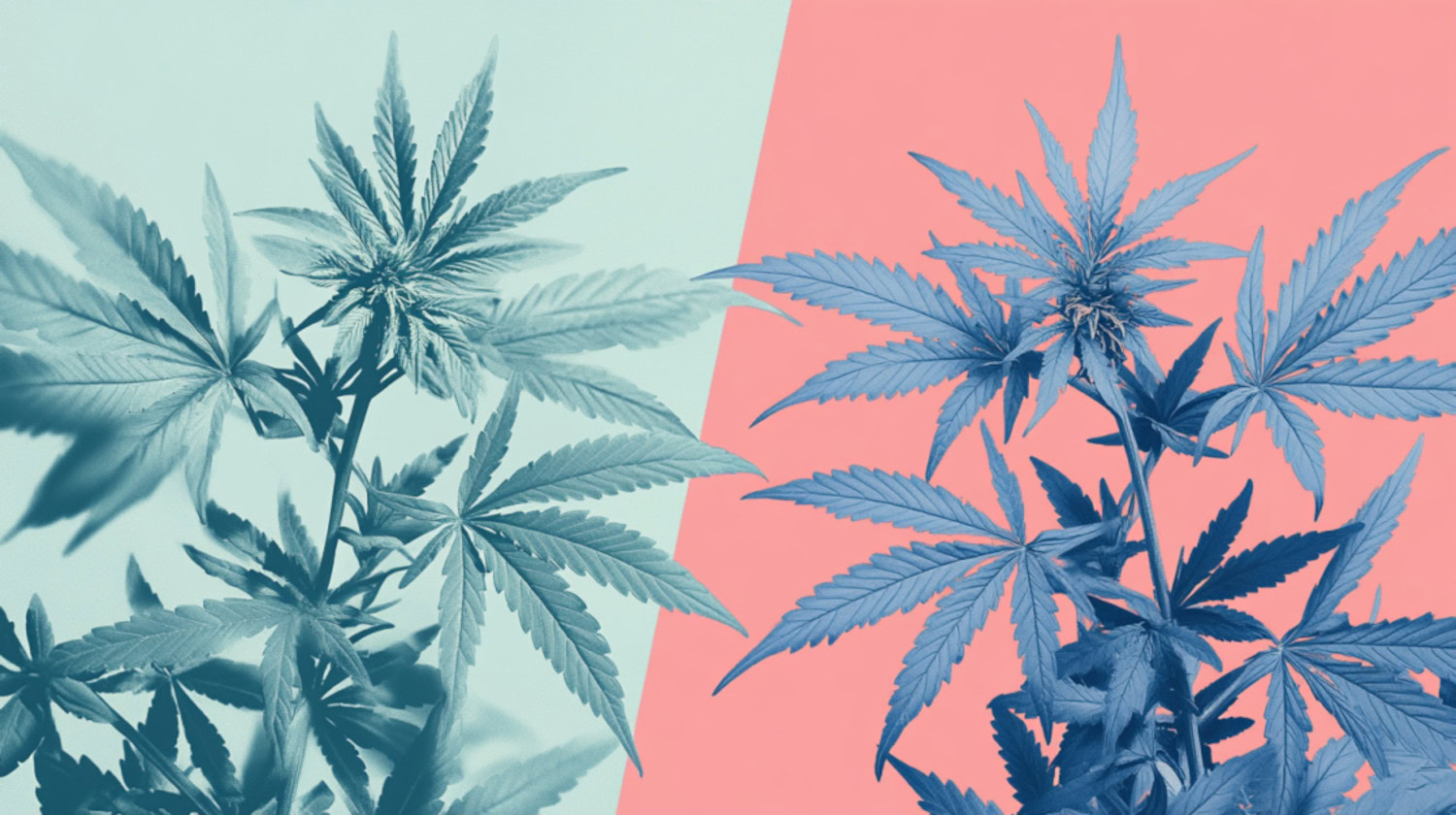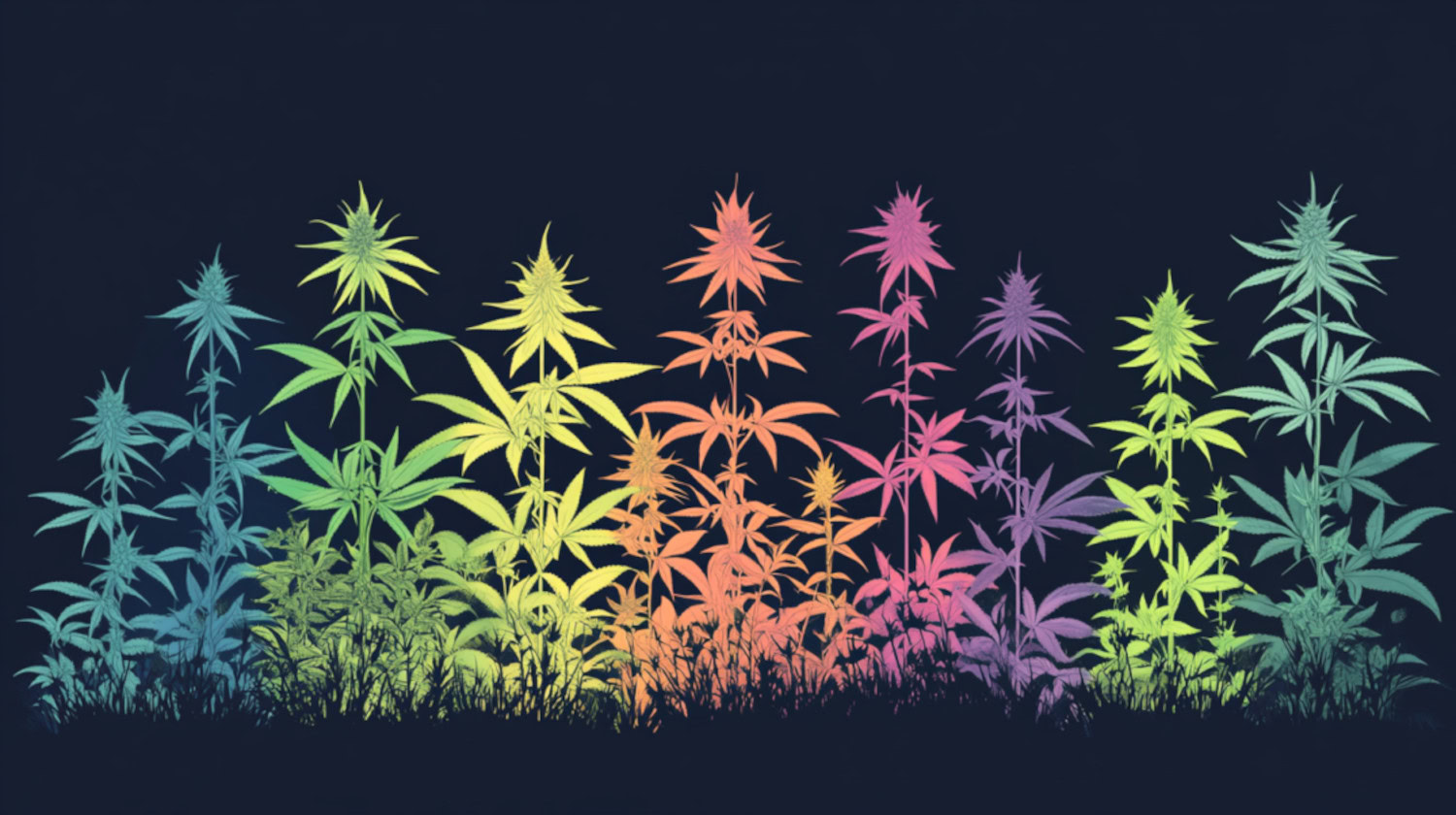Key Takeaways
- THC crystals, also called crystalline or THCA diamonds, are highly potent, single-compound cannabis extracts.
- Crystalline is ideal for precise dosing and versatile use, but lacks full-spectrum benefits.
- Effects are strong and fast-acting, best suited for experienced users.
While many support the full-spectrum cannabis, others are on the opposite end of the spectrum. For several reasons, scores of consumers champion pure THC, with no other compounds included.
Crystalline, sometimes known as THC crystals, allows consumers to enjoy one singular compound from the plant. In this article, we'll chip away at THC crystals to show you what they are, their pros and cons, and how they stack up to other THC-based products.
What are THC Crystals?
THC crystals are known by several names:
- Crystals
- Diamonds
- Isolate (though this can apply to other single-compound products)
In any case, the product lives up to its name. The singular compound consumable resembles the gems it's named after, both in look and feel. Crystals can vary in size and clarity based on various factors, including temperature and solvents used during extraction. The crystals' size, shape, or look do not appear to indicate their quality.
Chemically speaking:
- THC crystals are actually almost always THCA (tetrahydrocannabinolic acid), not THC.
- THC itself doesn’t crystallize—it forms a white powder.
- THCA converts to THC through decarboxylation, a chemical reaction that removes a carboxyl group.
When consumed via smoking, vaping, eating, or drinking, THC crystals deliver just one cannabinoid. This contrasts with full-spectrum products, which contain many plant compounds (cannabinoids, terpenes, flavonoids, etc.).
Despite being called "crystals," they can sometimes appear goopy or have other textures depending on the production process. Read on to learn more about how crystals are made and how their surfaces can vary depending on the process.
How are THC Crystals Made?
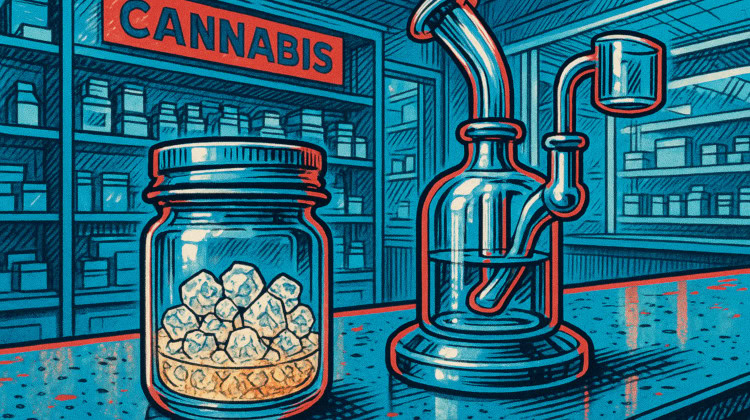
The process is complex and should never be attempted at home, as it involves highly flammable solvents. Always proceed with caution.
Here's an overview:
Extraction
- Acetic acid is used to extract cannabinoids and other compounds from cannabis.
- The process isolates THCA, not THC.
Solvent Removal
- Closed-loop systems apply heat, pressure, and movement to purge solvents.
Purification
- Chromatography is used to separate THCA from any remaining unwanted compounds.
- New solvents may be introduced to facilitate this step.
Crystallization
- After all purification, THCA begins to crystallize.
- Depending on residual plant materials, the end product might look like clear crystals or appear more syrupy or goopy.
What are THCA Diamonds?
THCA diamonds are a specific form of THCA isolate and often come paired with a terpene-rich sauce. Yes, it’s still THCA all the way up until it’s decarboxylated.
Let’s take a closer look. As a disclaimer, while we’re beginning to uncover more answers, additional analysis is required to confirm most reported effects.
Whether crystals are labeled as THC, THCA, or otherwise, they come from a terpene-rich refined oil commonly known as sauce. Producers may leave diamonds coated in this sauce, giving the isolated crystal a glossy coat containing additional plant compounds. If so, the product is considered more of a terpene-rich extract than a true isolate.
Differences vs. pure THC crystals:
- Crystals in sauce = more like a terpene-rich extract.
- Uncoated crystals = closer to true isolate.
Consumers (or producers) can add diamonds or sauce to various consumables, mainly bowls, bongs, joints, or smoked options.
Some consumers say they enjoy the effects of THCA diamonds for relaxation or stress relief. Clinical evidence remains limited. Always consult a healthcare provider before using cannabis for any health-related purpose.
Pros and Cons of THC Crystals
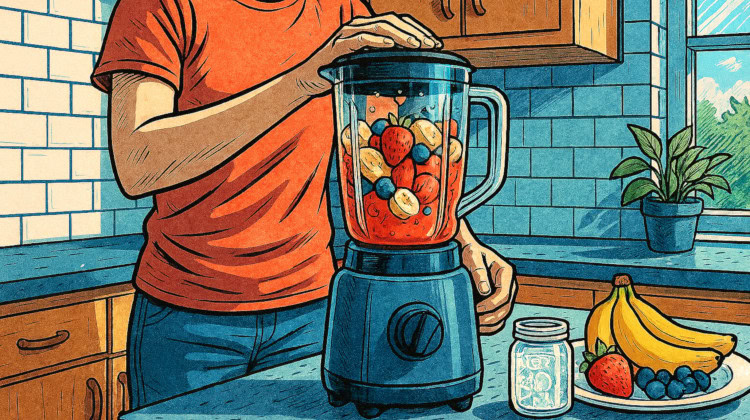
No matter the cannabinoid of interest, crystals have several potential benefits and drawbacks.
Pros
✔ "Purity": The term can be loaded, but in its best sense, cannabis purity provides consumers with the assurance they are only consuming the compound they desire and nothing else.
✔ Powerful Effect: Consumers experience the effect of one compound rather than having the experience possibly altered by other cannabinoids or terpenes. As such, the effects are often more predictable in isolates.
✔ Easy to Combine: Isolate is a typical base for many edibles, vapes and topicals. When broken down from its crystal structure, isolates work well in boosting an item's potency. In powdered form, isolated cannabinoids become an easy-to-use edible or beverage enhancer.
Cons
Lacks the Full Spectrum: Proponents of the entourage effect typically steer clear of isolates, citing an incomplete plant profile in the product. Without any other compounds, they feel the product fails to deliver the plant's full potential.
Lab Made: Some pot purists dislike consuming products made in labs, especially when using solvents. This subject is an ongoing debate in the cannabis community.
How to Use THC Crystals
Consumers can enjoy THC crystals in just about every conceivable method known today.
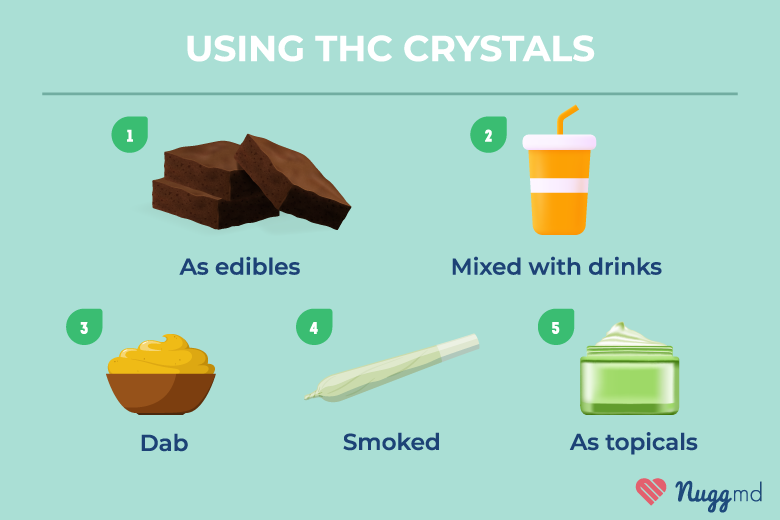
- Eating and Drinking: You could eat a crystal on its own, but most consumers will melt crystals into butter or oil to be used in edible recipes. Many companies make isolate-infused products for people unable or uninterested in making their own at home.
- Dabbing: Dabs and extracts are about as linked as possible. Crystals are no exception to the rule. With crystal dabbing, the effects are typically fast-acting and potent. This may appeal to experienced consumers, but new users or those with low tolerance should use caution and start with very small amounts.
- Smoking: Like vaping, crystals work as a great add-on to flower. Alternatively, THC crystalline can serve as the prime smokeable component in a bong, bowl, or similar pipe (though consumers should be prepared for stronger, more pronounced effects).
- Topicals: Isolates are often infused into lotions and other topicals to create products that offer localized relief without the psychoactive effects (since they typically won't reach the bloodstream).
Conclusion
Once you get past the potentially confusing name, THC crystals have a lot to offer consumers. Crystalline, including diamonds, sauce, THCA crystal, provides isolated cannabinoids. These crystals can be smoked, vaped, used in edibles, topicals, and more. Ultimately, it depends on personal preference.
The information in this article and any included images or charts are for educational purposes only. This information is neither a substitute for, nor does it replace, professional legal advice or medical advice, diagnosis, or treatment. If you have any concerns or questions about laws, regulations, or your health, you should always consult with an attorney, physician or other licensed professional.

